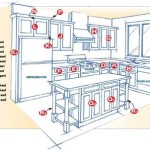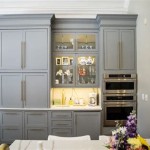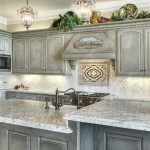Self-Install Kitchen Cabinets: A Comprehensive Guide for DIY Enthusiasts
Transforming your kitchen with new cabinets can be a daunting task, but it doesn't have to be. With careful planning and the right approach, self-installing kitchen cabinets is a rewarding and cost-effective undertaking that can update the heart of your home.
1. Planning and Preparation
Before you start, it's crucial to plan meticulously. Measure your kitchen space accurately, including the height, width, and depth of the walls. Draw a detailed layout of your cabinet placement, ensuring that there's ample clearance for appliances and fixtures. Consider your cabinet storage needs and choose appropriate sizes and styles.
2. Choosing Cabinets and Materials
Select cabinets that complement your kitchen's overall design and meet your functional requirements. Choose from various materials such as wood, laminate, or thermofoil, each with its own advantages and aesthetics. Consider the finish, color, and hardware that will enhance the overall look.
3. Assembling the Cabinets
Most kitchen cabinets come pre-assembled, but some may require assembly. Follow the manufacturer's instructions carefully and use appropriate tools for a secure and level installation. Assemble all the cabinets before starting the installation process.
4. Installing the Base Cabinets
Begin by installing the base cabinets. Measure and mark the cabinet locations on the floor and walls. Use shims or spacers to level the cabinets and ensure they're secured to the wall studs with screws. Connect the cabinets together using cabinet clips or screws.
5. Installing the Wall Cabinets
Install the wall cabinets in a similar manner. Use a level to ensure they're hung straight and securely. Attach them to the wall studs with screws and connect them to the base cabinets using mounting brackets.
6. Connecting to Appliances
If you're installing new appliances, connect them to the appropriate power and water sources. Ensure that the appliances fit properly within the designated spaces.
7. Installing Countertops
Once the cabinets are in place, it's time to install the countertops. Measure and cut the countertops to fit the cabinets and secure them with brackets or adhesives. Choose countertops that are durable, heat-resistant, and complement the kitchen's aesthetics.
8. Finishing Touches
Complete your self-installed kitchen cabinets with finishing touches such as drawer fronts, doors, knobs, and handles. Adjust the hinges and drawer slides for smooth operation. Seal the joints with caulk or trim for a professional-looking finish.
Tips and Precautions
- Use a level throughout the installation process to ensure accuracy.
- Drill pilot holes before inserting screws to prevent splitting.
- Wear safety glasses and gloves for protection.
- If you're not confident in your DIY skills, consider hiring a professional installer.
- Allow ample time for the installation, especially if it's your first time.
Conclusion
Self-installing kitchen cabinets can be an empowering and cost-efficient project for DIY enthusiasts. By following these comprehensive steps, you can transform your kitchen with beautiful and functional cabinets that enhance its style and functionality. Remember to plan carefully, choose high-quality materials, and approach the installation with patience and attention to detail.

How To Install Kitchen Cabinets Diy Family Handyman

How To Install Upper Cabinets Like A Pro Cabinetselect Com

How To Install Kitchen Cabinets All By Yourself Re

Design Install Your Dream Kitchen An Ultimate Guide A Piece Of Rainbow

How To Build Cabinets The Complete Guide Houseful Of Handmade

Diy Kitchen Cabinets Vs Home Depot House And Hammer

Diy Built In Cabinets For The Kitchen Angela Marie Made

How To Install Kitchen Cabinets

Diy Stacked Kitchen Cabinets Frills And Drills

How To Install Upper Cabinets Like A Pro Cabinetselect Com








